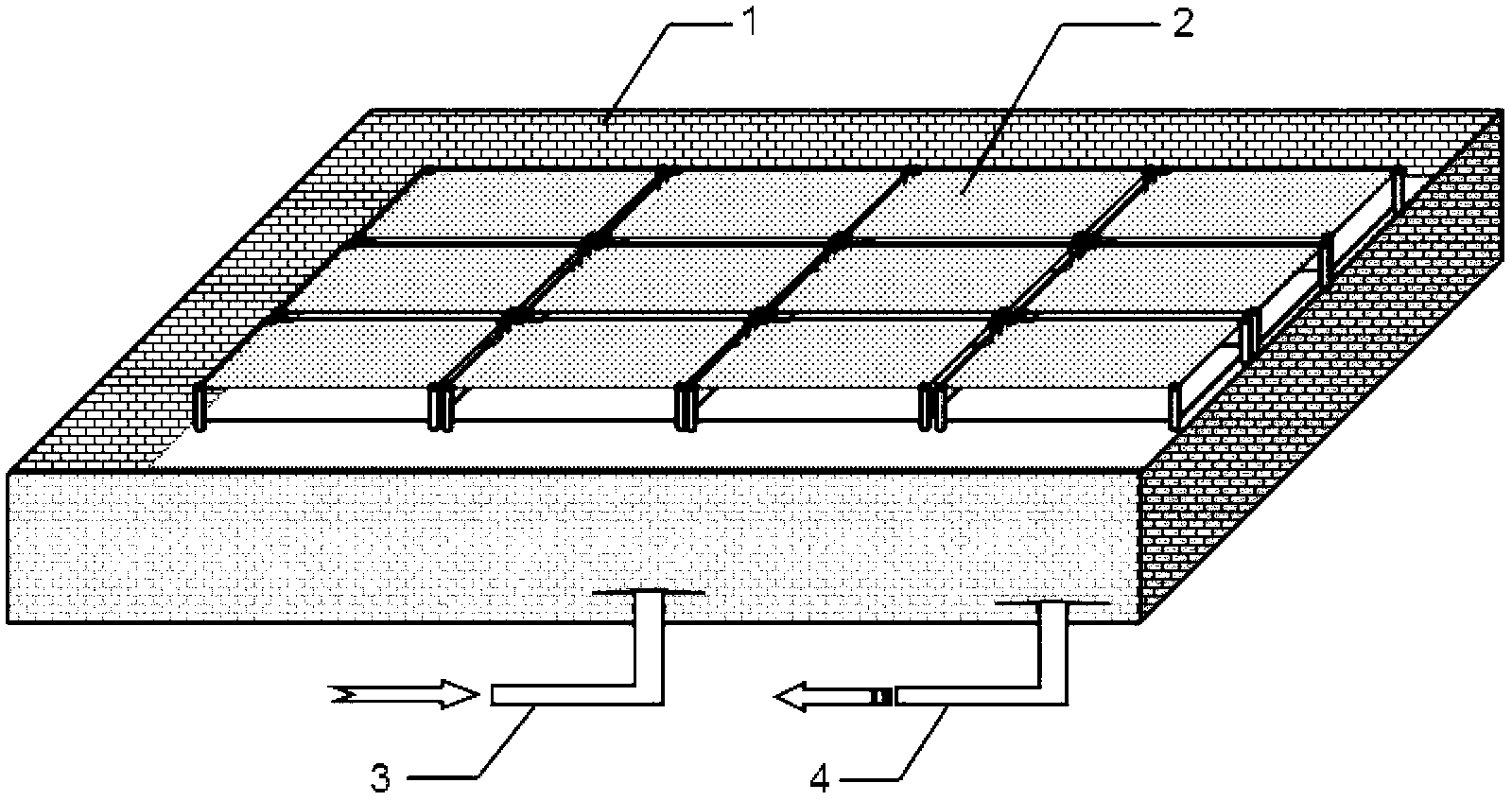Method for cultivating seedlings of betula alnoides in shallow water
A technology for seedling trays and seedling ponds, which is applied in the fields of botanical equipment and methods, horticulture, and applications, can solve the problem of splashing seeds or sprouts, large differences in the emergence rate and uniformity of sprouts, and difficulty in controlling the amount of watering. and other problems, to achieve the effect of reducing the incidence of diseases, reducing manual management and protection, and saving the cost of seedlings.
- Summary
- Abstract
- Description
- Claims
- Application Information
AI Technical Summary
Problems solved by technology
Method used
Image
Examples
Embodiment 1
[0051] (1) Matrix configuration and loading
[0052] The matrix is selected as yellow heart soil, and the matrix is screened, and the part with larger particle size is removed by sieving or manually. The optimal particle size for screening is between 1 and 3mm, and the maximum particle size cannot exceed 4mm.
[0053] Clean and disinfect the seedling trays before loading. When installing the substrate, put a layer of clean newspaper on the bottom of the tray to prevent the substrate from leaking from the hole at the bottom of the seedling tray. The substrate is 0.5±0.1cm lower than the edge of the seedling tray, the thickness is 5.0±0.1cm, and the surface of the substrate is paved.
[0054] (2) Treatment and sowing of the matrix after loading
[0055]Put the seedling tray loaded with substrate into the seedling pond, and then pour water into the pond to keep the water level in the pond 0.3±0.1cm higher than the substrate in the seedling tray, so that the substrate can nat...
Embodiment 2
[0063] The matrix is selected as yellow heart soil and vermiculite, and the yellow heart soil and vermiculite are mixed evenly in a volume ratio of 1:1.
[0064] Other steps are with embodiment 1.
[0065] Seedling effect: This ratio substrate is used for the shallow water seedling cultivation of Betula chinensis. Germination occurs after 3 days of sowing, and the sprouts emerge after 8 to 10 days. The growth is fast and uniform, and the seedlings can be transplanted after 60 days. Transplant seedlings 15 days in advance. The emergence rate can reach 90%.
Embodiment 3
[0067] The matrix is selected from yellow heart soil and organic matrix, wherein the organic matrix is a mixture of pine bark, retting sawdust and carbonized sawdust, and the yellow heart soil and organic matrix are mixed evenly at a volume ratio of 4:1.
[0068] Other steps are with embodiment 1.
[0069] Seedling raising effect: This ratio substrate is used for the shallow water seedling cultivation of Betula chinensis. Germination occurs 3 days after sowing, and the seedlings can be transplanted after 70 days, but the growth is not neat enough; the shallow water seedling cultivation of this substrate can transplant seedlings 5 days earlier than the single yellow core soil substrate, and compared with yellow core soil and The vermiculite substrate was 10 days late. The emergence rate can reach 80%.
PUM
 Login to View More
Login to View More Abstract
Description
Claims
Application Information
 Login to View More
Login to View More - R&D
- Intellectual Property
- Life Sciences
- Materials
- Tech Scout
- Unparalleled Data Quality
- Higher Quality Content
- 60% Fewer Hallucinations
Browse by: Latest US Patents, China's latest patents, Technical Efficacy Thesaurus, Application Domain, Technology Topic, Popular Technical Reports.
© 2025 PatSnap. All rights reserved.Legal|Privacy policy|Modern Slavery Act Transparency Statement|Sitemap|About US| Contact US: help@patsnap.com


